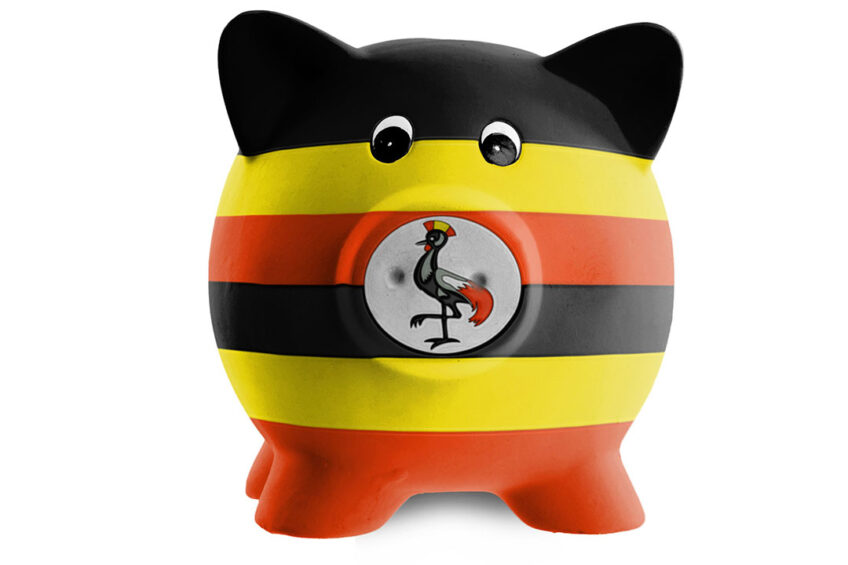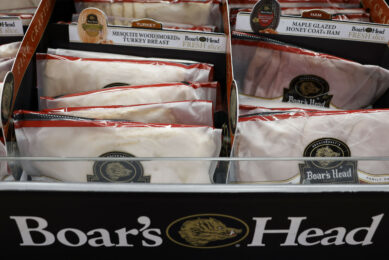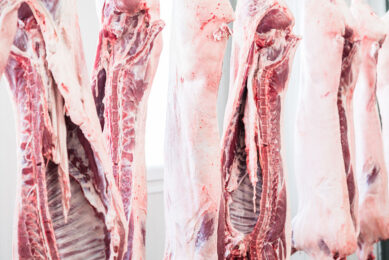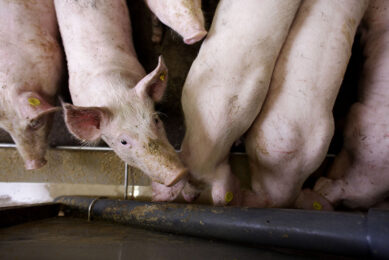Increased pork production in Uganda

Over the past 2 decades pig production has become an increasingly important activity in Uganda.
Over the last 30 years, pig population has increased from 0.19 to 2.3 million, and there are more than 1 million households raising pigs. But the sector is vastly informal and faces challenges such as inefficient input and output markets, poor governance (lack of collectives), and low productivity. The majority of pigs are kept by women and youths in small households with limited access to technological information and services. This contributes to the vulnerability and sustainability of the pig production system in Uganda.
Pork retail prices
Hellen Nantaba, a farmer in Buikwe district, says she spends about UGX140,000 (€37) to raise a pig in 4 months. At 4 months, the pig can weigh between 60-65 kg. Retailing at about UGX7000 (€2) per kilo she can get over UGX400,000 (€105) for one pig. The retail price for pork depends on location, value addition, and demand. On average a kilo retails between UGX 8000 to 30000 (€2 to €7).
Pork demand outweighs production
However, according to Christopher Mulindwa, head of Pig Production and Marketing Uganda Ltd., “Most farmers in the sector don’t follow the right procedure and as a result produce low quality pork that is more fatty.” Mulindwa added that the supply of pigs is still way below the local demand, forcing imports from the neighbouring countries like Kenya.
Ugandan sow & piglet mortality rates
In research conducted by the International Livestock Research Institute (ILRI) sow mortality in Uganda within the last 12 months was reported to be 2.5 %. Piglet mortality was as high as 10.2%.
Of the 650 random farms from which sampling was done:
20% of farms reported sows experiencing stillbirths
15% reported ill-thrift
12.5% reported respiratory disease
10.8% reported gastrointestinal disease
19% of sows partially or completely restricted from free movement inside pens
93% of sows had continuous access to water, but only 48.8% of the water supplies were clean
Sows with:
scouring/diarrhoea: 9%
lameness: 7.6%
“skinny” with a body condition score of 1 or 2: 92%
SAPLING initiative
CGIAR (formerly the Consultative Group for International Agricultural Research)
headquartered in Montpellier, France, is a global partnership that unites international organisations engaged in research about food security. Their current SAPLING (Sustainable Animal Productivity for Livelihoods, Nutrition and Gender Inclusion) initiative targets expansion in Uganda’s pig and cattle sectors. The SAPLING workshops hope to improve the livelihood of pork producers. In the long-term, there is expected to be overall efficiency, improved pig productivity, and increased consumption of livestock-derived foods as part of nutritionally diverse diets. Implementation of various innovation packages under SAPLING would result in infrastructure reform boosted by investments from the private sector.
Ugandan pig farmers have readily embraced collective action. The regional platforms have facilitated the creation of market linkages between input suppliers, auxiliary service providers, and farmers. Participants in SAPLING workshops are likely to create a profitable and resilient pig value chain by 2032.
Sources: FAO, CGIAR, ILRI, CNN











